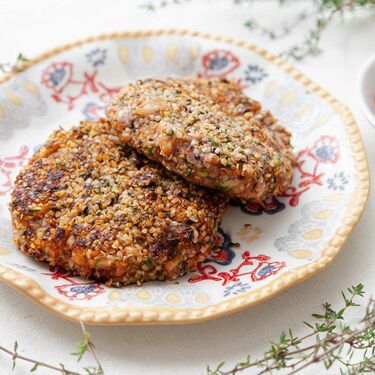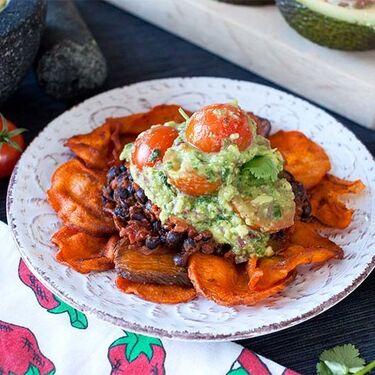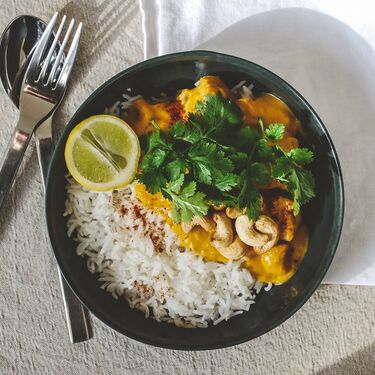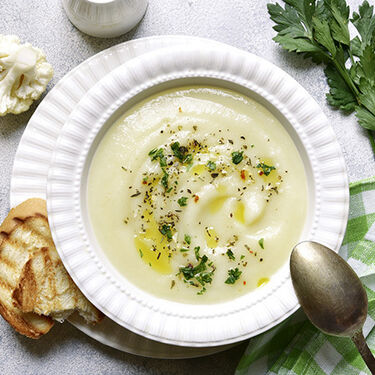Protein is movement’s great friend. It builds and repairs muscle, is great to eat after workouts and helps keep hunger at bay. But how much protein is enough and what's the best way to reach your quota?
With the help of Jean Hailes naturopath Sandra Villella, we dish up five protein facts you need to know. Plus, we highlight five of her plant-based protein-rich recipes, so you can knock your protein goals out of the park.
Protein is a powerhouse nutrient made up of building blocks called ‘amino acids’. Your body needs these to make and repair muscles and bones so you can walk, play tennis or hit the gym.
Protein also helps to produce your hormones, healthy brain chemicals (neurotransmitters) as well as disease-fighting cells for your immune system. And to boot, it even supports hair, skin and nail health.

Good sources of animal and plant protein include:
Protein is also found in lesser amounts in grains – particularly wholegrains such as oats, brown rice and whole wheat products.
Women’s protein needs change at different ages and life stages, explains Jean Hailes naturopath Sandra Villella. “They increase during pregnancy, whilst breastfeeding, and for women aged 70+.”
“Your protein needs also depend on how active you are,” says Sandra. “Women who are physically active at moderate to high levels need more protein in their diet to support muscle health.”
There are a few ways to work out your own protein needs, but they involve getting out the calculator and crunching some nutritional numbers.
To make things easier, Sandra says the answer is – quite literally – in the palm of your hand.
“At every meal throughout the day (breakfast, lunch and dinner) the protein portion should be the size and thickness of the palm of your hand. This is the rule for animal-based protein, such as meat, fish, eggs and dairy.”
“For plant-based protein such as beans, tofu, tempeh, nuts and seeds, you need to double this. So, each meal needs to contain a portion of protein that is the size of two of your palms.”
“If you’re concerned or unsure about your protein intake, or if you exercise at an elite level, speak to a qualified dietitian, naturopath or sports nutritionist,” advises Sandra.

Most plant proteins, such as wholegrains, legumes, nuts and seeds, are healthy food choices as they come with the bonus benefits of fibre, vitamins and minerals. But they’re missing some essential amino acids, so are called incomplete proteins. Animal proteins, on the other hand, are complete proteins (they contain all the essential amino acids).
How do you get around these ‘incomplete proteins’ if you’re eating a plant-based diet? Eat a wide variety of plant proteins in different combinations to ensure you’re ticking all the right boxes and getting all the amino acids your body needs, says Sandra.

This means combining grains and legumes, legumes and seeds, or grains and nuts in the one meal. Here are Sandra’s plant food combos to get you on the right track:
There are a few plant proteins that don’t fit the bill of being incomplete proteins and actually bring all the essential amino acids to the party. They are soy, quinoa and amaranth.

If you’re a meat eater, it’s fine to enjoy animal protein, but even better to include some plant protein too. “For omnivores, a healthy mix is to aim for about 50% of protein from animal sources and 50% from plant sources,” says Sandra. “As an added bonus, eating more plant proteins can cut your grocery bill and benefits the environment.”
Here’s how to pad out meals with more plant protein:
All reasonable steps have been taken to ensure the information created by Jean Hailes Foundation, and published on this website is accurate as at the time of its creation.
© 2025 Jean Hailes Foundation. All rights reserved. This publication may not be reproduced in whole or in part by any means without written permission of the copyright owner. Contact: licensing@jeanhailes.org.au